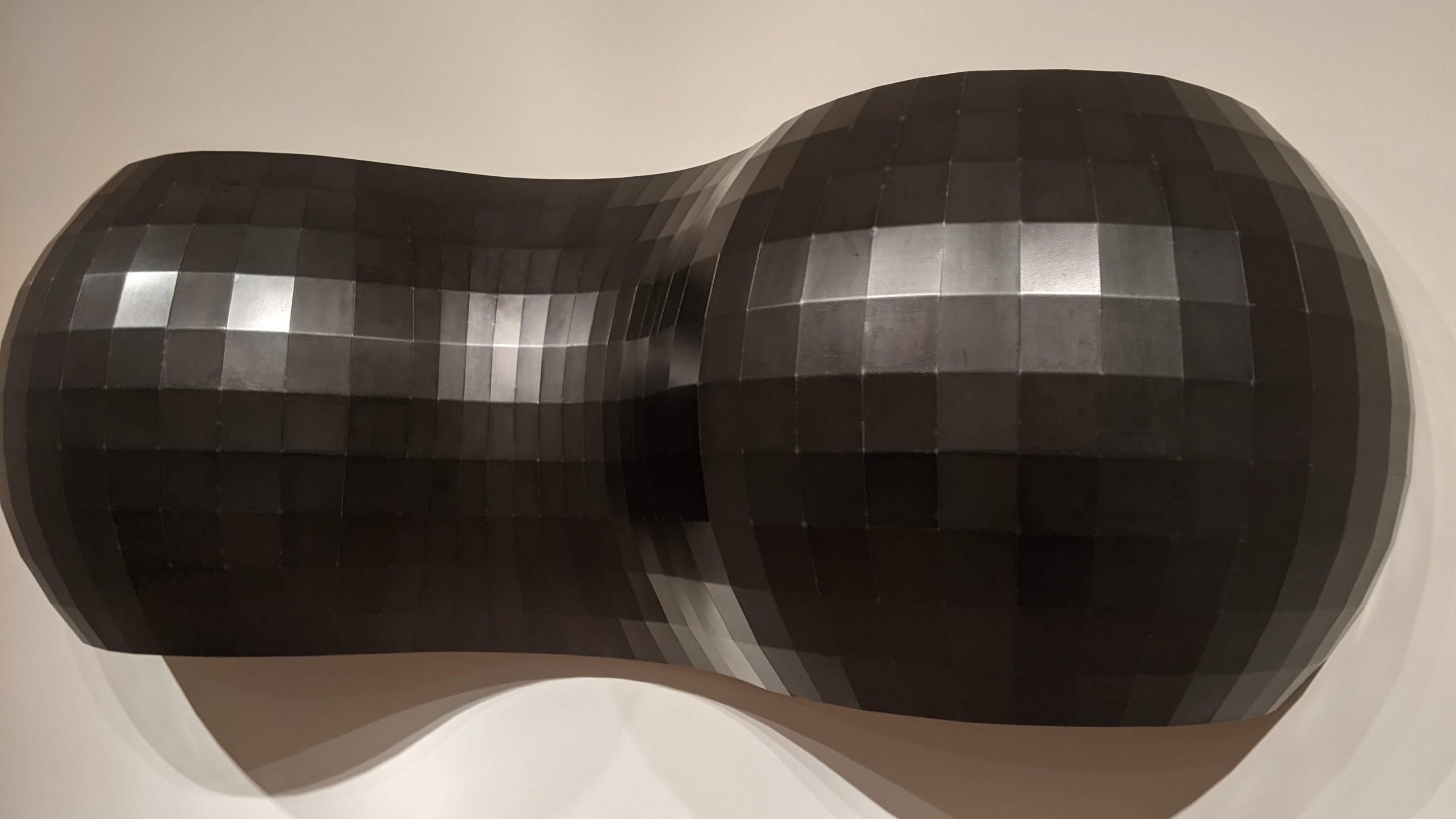Inside the Keeler Gallery – the first exhibition space behind the Metal Museum’s visitor desk – large, curving steel sculptures hang on walls and sit on the floor. In the solo exhibition Corollary, artist Thomas Campbell’s mission to marry industrial metalwork with fine craftsmanship is on full display. Campbell, a fifth-generation steelworker, created the sculptures in Corollary specifically for this show. For him, it was an opportunity to change the size of his sculptures towards the larger scale industrial work done at Bemberg Iron Works, his family’s business.
Corollary is part of the museum’s Tributaries exhibit series, which current Executive Director Carissa Hussong started in 2008. Each year, the Metal Museum hosts between two and five contemporary artists “whose work is beginning to have a significant impact on the metal arts community.” According to Director of Collections and Exhibitions Brooke Garcia, there are a few ways the museum selects artists for inclusion. Artists can apply directly to the series through the museum’s website. The Metal Museum also has staff artists who regularly attend metalsmith conferences and bring back names of individuals they believe would be a good fit for the Tributaries series. Additionally, curatorial staff research and meet with artists they believe should participate. Campbell had a piece in the Metal Museum’s 40 Under 40 group exhibit in 2019, and the staff invited him to create a solo exhibit for Tributaries.
He began planning for the exhibit roughly a year ago, beginning with an idea he had to use “the faceted language that has driven [his] work over the past few years to make a spherical form.” After making small scale models in late 2021 to work through issues and modeling, he constructed the floor pieces in March 2022. The wall pieces began in early 2022.
Arc No. 1 and Arc No. II drew me in repeatedly during my visit. The convex and concave sculptures reflect the gallery lights differently depending on where you stand. Campbell noticed while working on this series that the bends and facets he relies on to create volumetric forms reflect light in interesting ways, which he noted was “a pleasant surprise.” While he didn’t design these works solely focused on the use of light, he enjoys how the play of light off his pieces “gives the work an activeness that intrigues and engages people.”

The exhibition title has a double meaning for Campbell. In mathematics, a corollary is a theorem that follows from another theorem. When he designed the piece Corollary I, he did not intend for the cutaway steel to form the patterns for Corollary II, creating two pieces that resulted in almost no material waste. Outside of math, a corollary is often defined as a natural consequence or result. As Campbell shared with museum Communications Manager Jenn Godwin, “there is a definite corollary relationship between my roots in the steel trade and my current work. From industry, this work has emerged.” Honoring this tradition is of primary importance to Campbell,

Campbell’s goal is for his viewers to look at steelwork – the functional metal that makes so much of modern life possible – with an appreciation of the precision and artistry that goes into its production. It is hard to leave his exhibit without that understanding.
Corollary is on display now through July 17, 2022, at the Metal Museum.
Caroline Mitchell Carrico is a native Memphian and, as a historian by training, she enjoys researching the city’s past and pulling it into the present. When she isn’t reading and writing, she can often be found cheering on her kids’ soccer teams.

